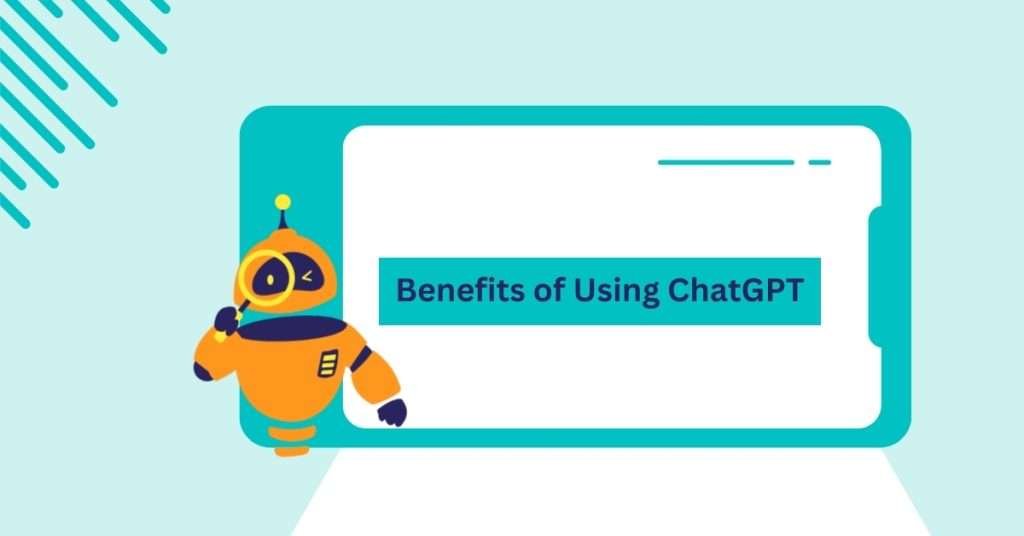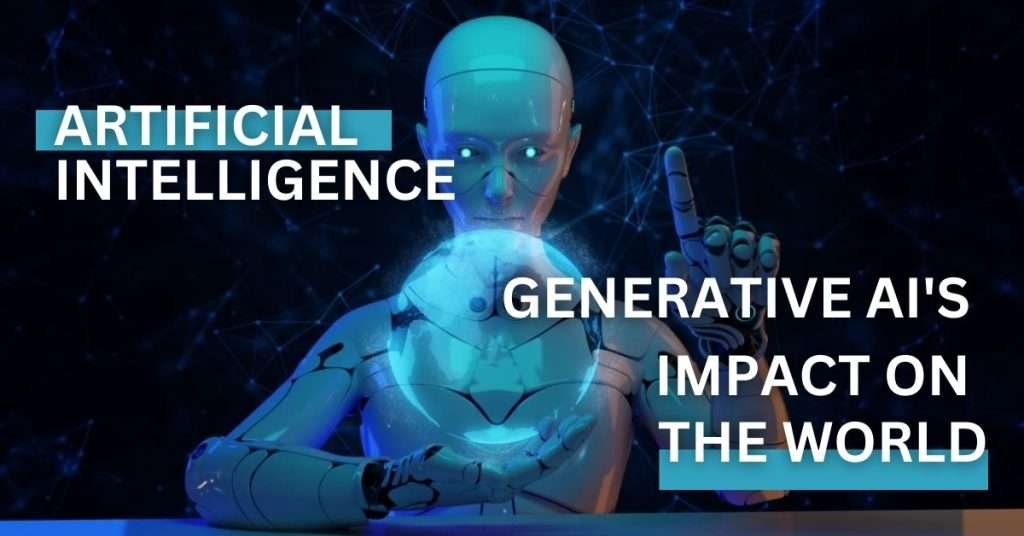Welcome to the era of ChatGPT, where discussions with machines transcend the normal. Developed by OpenAI, ChatGPT is a linguistic expert, transforming text information into dynamic, human-like responses. Whether it’s for seamless consumer support, creative content generation, or simply investigating the limitations of non-formal AI, ChatGPT is the key. Join me on this journey as we untangle the surprises of ChatGPT and discover how it’s reshaping the way we immerse with artificial intelligence in the most realistic and innovative routes.
What is ChatGPT?
ChatGPT, short for Chat Generative Pre-trained Transformer, is a cutting-edge lesson model formulated by OpenAI. Operating on the GPT-3.5 architecture, ChatGPT embodies a significant advancement in the field of artificial espionage. Its preliminary function is to develop a human-like text based on the input it acquires, creating a versatile tool for immersing in natural language dialogues.
Unlike traditional chatbots, ChatGPT doesn’t rely on predefined responses or rule-based systems. Instead, it leverages a profound neural network that has been pre-trained on a vast and diverse dataset, facilitating it to understand context and produce contextually relevant outputs. This unique strategy sets ChatGPT apart, permitting it to adjust to an expansive range of conversational scenarios with a level of sophistication and coherence that pantomimes human exchange.
What is the Purpose of an AI Chatbot?
The objective of an AI chatbot is to stimulate realistic language dialogues between users and machines. AI chatbots force artificial intelligence and natural language processing capabilities to comprehend user inputs and generate contextually appropriate responses. These chatbots are developed to confront interactive dialogues, offering users a seamless and efficient method to interact with technology.
One primary objective of AI chatbots is to improve user understanding by nourishing instant and precise knowledge, assistance, or direction. They perform as virtual attendants, qualified to understand queries in everyday language and respond in a technique that simulates human-like dialogue. This functionality creates AI chatbots beneficial across different industries and applications.
In customer service, AI chatbots can address routine questions, troubleshoot problems, and provide knowledge, liberating human agencies to focus on more complicated lessons. Similarly, AI chatbots discover applications in sectors such as healthcare, education, and e-commerce, offering approval, answering inquiries, and streamlining contact procedures. Ultimately, the significance of AI chatbots is to improve efficiency, accessibility, and user happiness by creating a responsive and interactive interface between individuals and technology.
Who Owns ChatGPT?
ChatGPT is the brainchild of OpenAI, a leading artificial intelligence analysis laboratory. Established with a task to increase digital intellect in a manner beneficial to humankind, OpenAI is at the forefront of cutting-edge AI analysis and development. Established as a non-profit association in 2015, OpenAI later transitioned to a for-profit model to seduce the essential resources for its ambitious undertakings.
Ownership of ChatGPT lies within the purview of OpenAI, showcasing the organization’s responsibility to push the limitations of AI capacities. OpenAI’s priority on accountable and ethical AI development aligns with its devotion to guaranteeing that artificial intelligence performs the greater good and is deployed in manners that prioritize protection, transparency, and cheerful societal influence.
As a result, the ownership of ChatGPT by OpenAI echoes a strategic approach to pioneering progress in AI technology with a focus on ethical thinking and the advancement of humanity. The collaborative endeavors of OpenAI’s team of experimenters and developers contribute to the ongoing expansion and refinement of ChatGPT, solidifying its place as a transformative power in the area of conversational AI.
How is ChatGPT Different from Other AI?
The originality of ChatGPT lies in its progressive language generation abilities. Unlike traditional chatbots that depend on predefined answers or rule-based strategies, ChatGPT is powered by a deep neural network that has been pre-trained on a vast corpus of diverse text. This enables it to comprehend context, generate human-like reactions, and adapt to a wide range of conversational techniques.
ChatGPT’s differentiation lies in its generative strategy, progressed neural network architecture, contextual knowledge, versatility, and proficiency to continuously comprehend. These grades collectively create ChatGPT, a pioneering model in the realm of conversational AI, setting it apart from other strategies and contributing to its widespread relevancy.

The utilization of ChatGPT brings forth a multitude of benefits, revolutionizing the landscape of human-machine interactions and contributing to enriched user knowledge.
Here are some key advantages of using ChatGPT:
- Natural Language Understanding: One of the key advantages of ChatGPT is its ability to comprehend and answer natural language information. This makes interactions with the AI more instinctive and user-friendly.
- Versatility: ChatGPT’s versatility permits it to be applied across various domains, from customer permission and virtual deputies to content creation and imaginative writing.
- Improved Customer Service: Businesses can influence ChatGPT to improve their customer benefit by nourishing instant and valid answers to user queries, thereby enhancing overall customer happiness.
- Time Efficiency: ChatGPT can regulate a high volume of investigations simultaneously, decreasing response times and improving overall functional efficiency.
- Continuous Learning: The model is qualified to learn new data, allowing it to adapt and enhance over time.
The benefits of using ChatGPT extend across enhanced communication, functional efficiency, cost-effectiveness, and imaginative content generation, creating a transformative technology with far-reaching implications for different enterprises and applications.
The Functionality of ChatGPT:
ChatGPT employs the transformer architecture, a neural network architecture that has become the cornerstone of many recent improvements in natural language processing. This architecture permits the model to process and apprehend contextual knowledge virtually, capturing long-range dependencies in the input text.
The functioning of ChatGPT can be broken down into two main stages: pre-training and fine-tuning.
- Pre-training: During this grade, the model is uncovered to an extended and various dataset including aspects of the Internet. The purpose is for the model to memorize the structure, syntax, and semantics of the language by anticipating the next word in a verdict. GPT-3.5, the base model for ChatGPT, is pre-trained on a colossal dataset, encouraging it to acquire a profound knowledge of the difficulties of human language.
- Fine-tuning: Once pre-trained, the model is fine-tuned on precise tasks or domains to tailor its interpretation. Fine-tuning permits ChatGPT to adapt to respective use cases, providing its cogency in a combination of applications.
Applications of ChatGPT:
The versatility of ChatGPT extends far beyond mere discussion. Its powerful abilities have found applications in multiple domains, showcasing its possibility to revolutionize different industries.
Conversational Agents and Chatbots:
- ChatGPT has become a cornerstone in the expansion of advanced conversational agents and chatbots. Its ability to comprehend and develop human-like text allows businesses to develop highly engaging and responsive virtual assistants. These virtual agencies can handle customer questions, provide knowledge, and even facilitate e-commerce commerce, enriching user understanding and efficiency.
Content Creation:
Content creation has been uncommonly influenced by ChatGPT. Writers and content creators can force the model to generate imaginative and engaging pieces of content. From articles and blog posts to marketing copy and social media content, ChatGPT proves to be a valuable tool in increasing productivity and creativity in the content creation process.
Coding Assistance:
- Developers and programmers can be satisfied with GPT’s coding assistance capabilities. The model can apprehend and generate code snippets based on natural language prompts. This feature aids developers in writing code more efficiently and serves as a valuable resource for discovering programming terminologies.
Language Translation:
- ChatGPT’s proficiency in knowledge and generating text makes it a potent tool for language translation. Its proficiency in comprehending context permits for more accurate and contextually appropriate translations, bridging contact gaps across speeches.
Educational Support:
- In the kingdom of education, ChatGPT has been confirmed to be a valuable investment. It can help students comprehend complex ideas, provide justifications for different issues, and even aid in language learning by confronting in discussions and method sessions.
Simulations and Role-Playing:
- ChatGPT’s interactive and dynamic nature makes it an objective candidate for simulations and role-playing scenarios. Whether for training definitions, recreation, or educational simulations, the model can simulate various personalities and scenarios, furnishing realistic and immersive knowledge.
Research and Exploration:
- Researchers and scientists can leverage ChatGPT to investigate and apprehend extensive amounts of textual data. Its proficiency in procedure and generating human-like text facilitates the analysis of investigation papers, articles, and other publications, accelerating the investigation method.

Generative AI's Impact on the World:
The inception of generative AI, illustrated by models like ChatGPT, has led to a recent era of opportunities across different enterprises.
Here are some methods by which generative AI is modifying the world:
- Content Creation: Generative AI can assist in content creation, including writing articles, generating commerce copy, and even building artistic pieces. This has the opportunity to revolutionize the imaginative industries.
- Personalization: AI-driven proposals and personalization are becoming more cultured, offering users tailored knowledge in areas such as online shopping, flowing benefits, and social media.
- Healthcare Assistance: Generative AI models can be employed to assist healthcare professionals in tasks such as medical image examination, drug discovery, and even generating medical reports.
- Language Translation: The proficiency of generative AI to understand and develop text in multiple languages facilitates more valid and efficient language translation, breaking down transmission barriers.
- Educational Support: AI can be utilized to build personalized learning understandings for students, offer adaptive tutoring, generate educational content, and assist with language learning.
Where is AI Going in the Future?
The future of AI holds immense promise and potential for transformative improvements. As technology continues to develop, several trends and opportunities emerge:
- Enhanced Personalization: AI will play an important role in delivering highly personalized understanding across various digital platforms, tailoring content and benefits to individual tendencies.
- Improved Automation: Automation powered by AI is expected to develop into more industries, streamlining procedures, reducing human intervention in routine tasks, and improving overall efficiency.
- Ethical AI Development: With the growing significance of AI in society, there is an increasing intensity of ethical reflections. Future developments in AI are likely to prioritize indebted and honest use, handling problems connected to bias and solitude.
- Integrating AI into Everyday Life: AI technologies will become seamlessly integrated into everyday life, from smart homes and virtual attendants to healthcare and education.
- Advancements in Natural Language Processing: Advancements in natural language processing, as seen in prototypes like ChatGPT, will lead to more cultivated and context-aware conversational AI, enabling more pragmatic exchanges between humans and engines.
Wrapping Up:
ChatGPT stands as a testament to the remarkable progress in the field of artificial intelligence. Its ability to immerse in coherent and contextually applicable conversations marks a significant leap forward in the development of conversational AI. As we look toward the future, the continuous expansion of AI, guided by ethical principles and a focus on satisfying humanity, holds the promise of remaking the way we live, work, and interact with the digital world. The journey of AI, illustrated by ChatGPT, is a charming examination of the kingdoms of invention and possibility.







